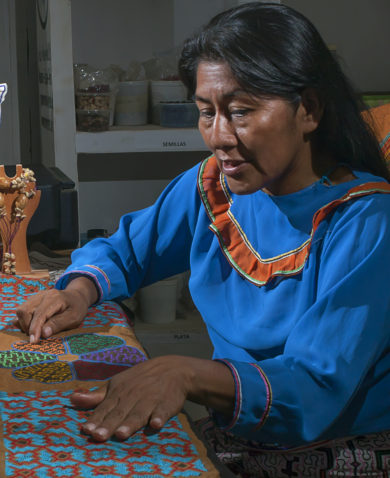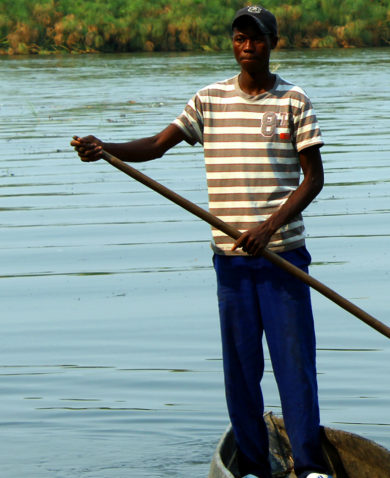The villagers looked at one another and then looked away. Uneasy laughter and flushed cheeks spread quickly through the small group of volunteer trainees who were standing in a circle around a pile of human excrement, placed there by a trainer’s shovel. These volunteers were in the midst of a community-led total sanitation (CLTS) training session in Shakawe, Botswana. The CLTS trainer then placed an overly ripe apple next to the human waste and waited.
The trainees’ faces changed from looks of confusion to bewilderment and then disgust. Flies had made their way to the circle, but they were moving from the pile of human waste to the apple, then back to the excrement. The trainer grabbed the apple and offered it to those nearby, but no one was eager to partake.
“Why not?” he asked with a straight face. “It looks clean to me!”
In rural communities of southern Africa, poor sanitation is a major source of disease and mortality, especially where water supplies are poor, badly managed, or susceptible to contamination. These issues are compounded by the fact that honest discussions about taboo topics like bathroom habits and the health risks of open defecation are off limits.
Enter CLTS, an innovative methodology for mobilizing communities to eliminate open defecation. CLTS was pioneered in Bangladesh and is used today in more than 50 countries. CLTS uses interactive tactics like the demonstration described above to shock communities into confronting the threats open defecation poses to their health and change their behaviors.
Through the USAID-funded Southern Africa Regional Environmental Program (SAREP), Chemonics is using CLTS to help communities in Botswana, Angola, and Namibia address their health challenges head on. By incorporating CLTS into its integrated development approach, SAREP has been better able to improve public health while strengthening water and sanitation services, responding to global climate change, and protecting biodiversity in the Okavango River Basin and Delta (which supports the livelihoods of more than 880,000 people and was recently declared a UNESCO World Heritage site). USAID based SAREP’s design on the recognition that the health of ecosystems and the health of communities are interdependent.
With the assistance of SAREP, communities like the one in Shakawe are learning about the importance of healthy hygiene habits, often in shocking ways. But direct program assistance only goes so far. As SAREP Deputy Chief of Party Brian App explains, CLTS is designed to shock communities into taking the lead when it comes to championing healthy behaviors.
“In the communities in which we work, there remain long-held beliefs that if you use the same latrine, they believe you can die. CLTS helps change that perception. We use startling tactics to create a ‘triggering moment’ in which the community members themselves say, ‘We want to be open defecation-free,’” he said.
CLTS is a demand-side approach. A crucial step in addressing open defecation is to install latrines and get people to use them. Rather than simply supplying latrines and assuming there will be a natural demand to use them or that their value is self-evident, CLTS recognizes that open defecation can be an ingrained behavior and that behavior change techniques are required to normalize latrine use.
The results of CLTS have been promising in Shakawe, where activities have generated enthusiasm for behavior change in schools and throughout the community. Already, 50 latrines have been built and are in use. Now, traditional leaders are mobilizing their communities to support CLTS and make Shakawe an open defecation-free community.





































